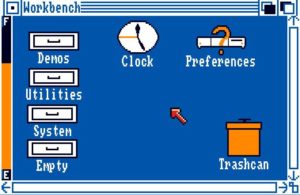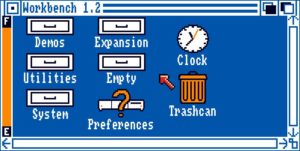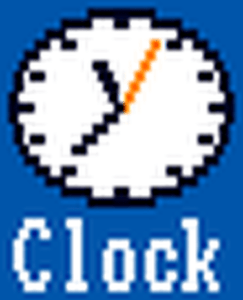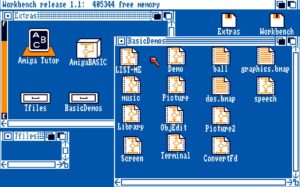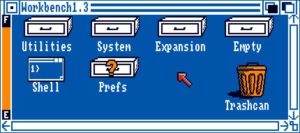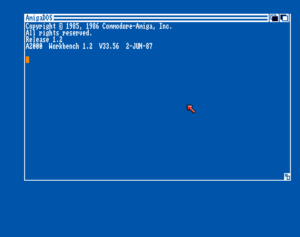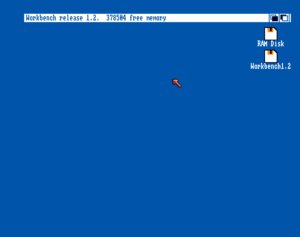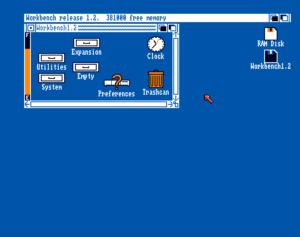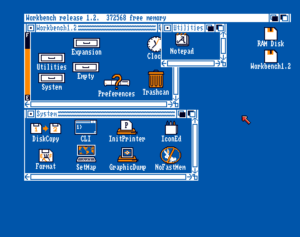Workbench 1.2
Workbench 1.2 came with the Amiga 1000 from September 1986 onwards, accompanied by Kickstart 1.2 on disk, and was the initial version shipped with early Amiga 2000-A, Amiga 500 and Amiga 2000-B machines.
Visually, Workbench 1.2 looks much like Workbench 1.1, although there are some visual differences, such as the icon for the Trashcan having a little more detail, same goes for the Clock icon (more about this in the next paragraph), and the icon for the Preferences tool has been improved to give more contrast around the question mark.
You may have noticed that the time on the icon for the clock has changed, as well as it now having points for the hours. The time on the clock may be familiar to those who remember, or are familiar with, the Challenger Space Shuttle disaster. The person who created the icon, Eric Cotton, recently shared in the Commodore International Historical Society Facebook group, the following:
“Little known fact: As a memorial to Challenger, I positioned the hands on the Amiga Clock icon to the time of the explosion, 11:38EST (though it looks on the icon like 11:37 cause of the resolution I was working with).”
The Workbench 1.2 Disk gained a new drawer, called Expansion, which is where you would install any software that may be needed by any hardware expansions that you may add to the system.
As is visible by the disk usage gauge at the side of the Workbench disk window, the Workbench 1.2 Disk was almost entirely full, while the Workbench 1.1 Disk still had a fair amount of space still free.
Workbench 1.2 was the first version of Workbench to feature the use of a RAM disk as standard. This works like any other storage, although it is lightning fast when compared to Floppy Disks, or even compared to Hard Disk Drives. However, the two main downsides are that the more storage needed for the files stored in the RAM Disk, the less RAM is available for programs to run in, and anything that is stored there is lost if the machine crashes, is rebooted or turned off.
As with Workbench 1.1, Workbench 1.2 came with a Workbench Extras 1.2 Disk, which had changed quite a bit since the Extras 1.1 Disk. It still included AmigaBASIC by Microsoft, but it no longer included Amiga Tutor. Instead, there was a new tool, called Say, which provided a text-to=speech, enabling the user to type what they wanted the Amiga to ‘say’ out loud, and the Amiga would say it. It could speak in a male, female or robot voice, and the speed and tone could also be altered. There was also a calculator, and a folder with several tools for working with IBM-Compatible 5.25″ Double-Density disks, when used with a A1020 5.25″ disk drive.
Workbench 1.2 should work on any version of Kickstart from Kickstart 1.2 onwards (Kickstart 1.3, Kickstart 1.4beta, Kickstart 2.0, Kickstart 3.0, Kickstart 3.1), although on Kickstart 2 onwards things will look a bit odd and some menu functions will be different or gone altogether. The Amiga Museum has tested and verified that Workbench 1.2 does in fact work on Kickstart 3.0.
| <- Back to Workbench 1.1 | On to Workbench 1.3 -> |
